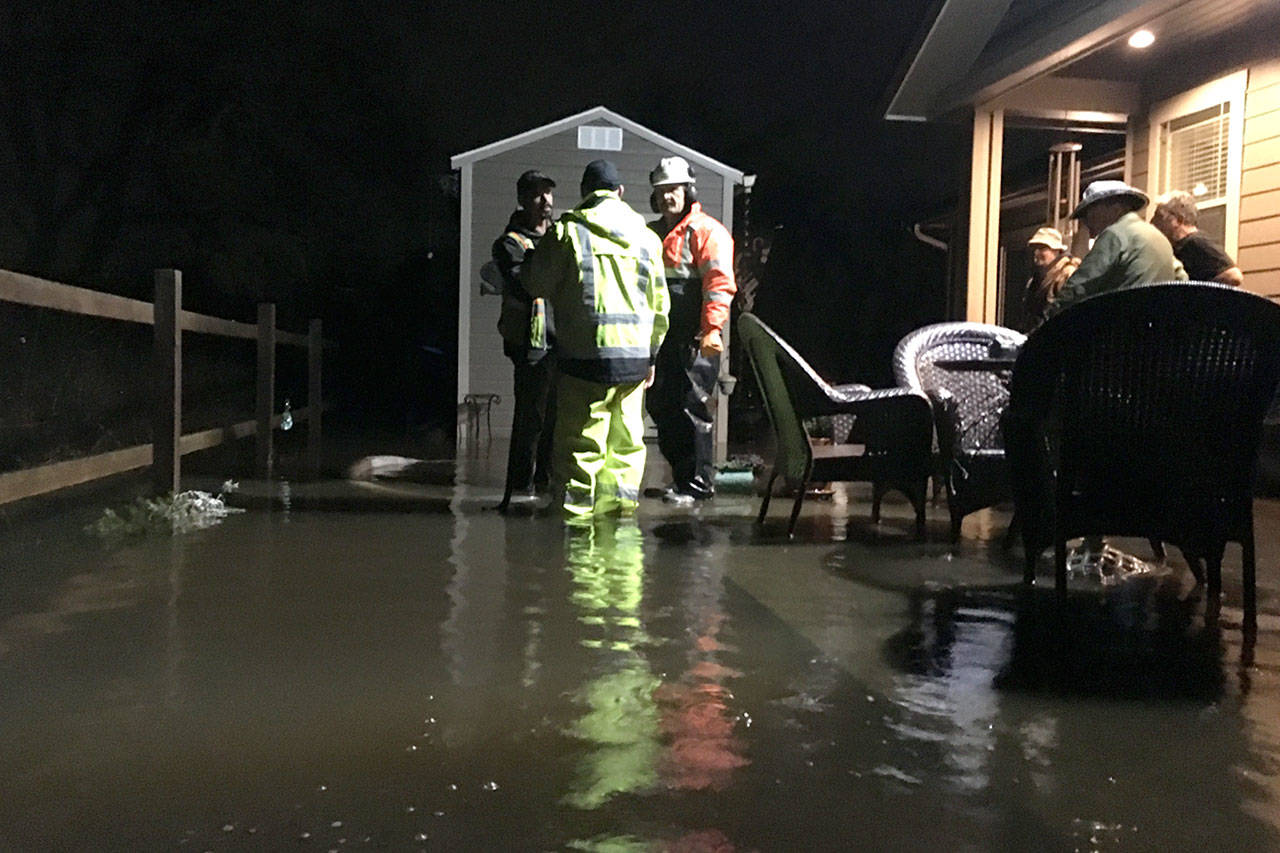SEQUIM — Heavy rain last week spurred Sequim city staff and residents to place sand bags and pump out inundated areas south of U.S. Highway 101 and in the city’s biggest park.
Sequim public works director David Garlington said that on Feb. 6 neighborhoods off East Silberhorn Road and the Seabreeze Apartments off McCurdy Road experienced high water that threatened structures.
“We were able to keep the water out of apartments,” he said.
Carrie Blake Community Park also experienced high water.
“We did some work to protect some of our own buildings (there),” Garlington said.
A day prior, Gov. Jay Inslee had issued an emergency proclamation for 19 counties — including Clallam and Jefferson — because of forecasted storms. Rainfall reached about 2.7 inches in the Sequim area from Feb. 4-10.
In the city’s southwest corner, water from Burnt Mountain collected at several areas culminating at Falcon Road-area properties off Silberhorn Road and migrating to the northeast, Garlington said.
“It was an excess of water,” he said. “There’s not much up there to stop that water.”
Water enveloped roadways on Rolling Hills Way and Petal Lane.
City crews stayed with one home and its owners through the night helping pump water out of the flooded backyard. They also placed “high water” signs and provided some sandbags for neighbors.
Garlington said it hasn’t always been a city practice to help to that extent.
“The feeling I have, and many on the city staff have, is that we’re a community and we’re going to help when the community needs help,” he said.
A few weeks ago, city crews battled snow by running five consecutive 24-hour shifts during the snowstorm that brought 5.6 to 8 inches to the Sequim area.
Projects in works
City staff continue to wait for an approximate $1.3 million grant award from the Federal Emergency Management Agency (FEMA) for a stormwater inception project.
Garlington said it’s a city project in Clallam County to prevent flooding in Sequim. It would collect water from west of Happy Valley Road and help it infiltrate into the county’s proposed Dungeness Off-Channel Reservoir near the Dungeness River.
The proposed county project received a $4.1 million grant from the state Department of Ecology last year to purchase acreage and help design the $25 million-$30 million reservoir to capture winter river flows for irrigation, to help conserve water and to help migrating salmonids.
Ann Soule, the City of Sequim’s resource manager, previously said the project would recharge the aquifer and prevent flooding in the city.
She said the FEMA grant process is long and began a few years ago; paperwork was finalized last summer.
Garlington said the earliest the project would go to bid is 2021 because the city must wait for the state Department of Natural Resources to transfer its land to the county for the off-channel reservoir.
He said they cannot send stormwater to infiltrate the property until an agreement is reached.
Soule said the county already agreed to allow the stormwater infiltration to occur once the transfer is complete.
Approved housing developments like the 97-home Legacy Ridge south of South Seventh Avenue faced stormwater issues because the top layer was glacier sill preventing water from soaking in, Garlington said.
He said the developer will need to punch through the sill to help it drain better, and that nearby homeowners may need to do the same.
City staff plan to use a $339,117 Ecology grant to fix some flooding issues across the city including at the Seventh Avenue/Washington Street intersection.
Soule said some of the funds will be sued to expand the infiltration area at the intersection.
City staff are designing the project this winter and spring. They plan to have it completed before the grant expires in June 2021.
For more information about city projects, visit www.sequimwa.gov or call 360-683-4908.
________
Matthew Nash is a reporter with the Olympic Peninsula News Group, which is composed of Sound Publishing newspapers Peninsula Daily News, Sequim Gazette and Forks Forum. Reach him at mnash@sequimgazette.com.
Editor’s Note: Reporter Matthew Nash lives near one of the neighborhoods affected by flooding.

